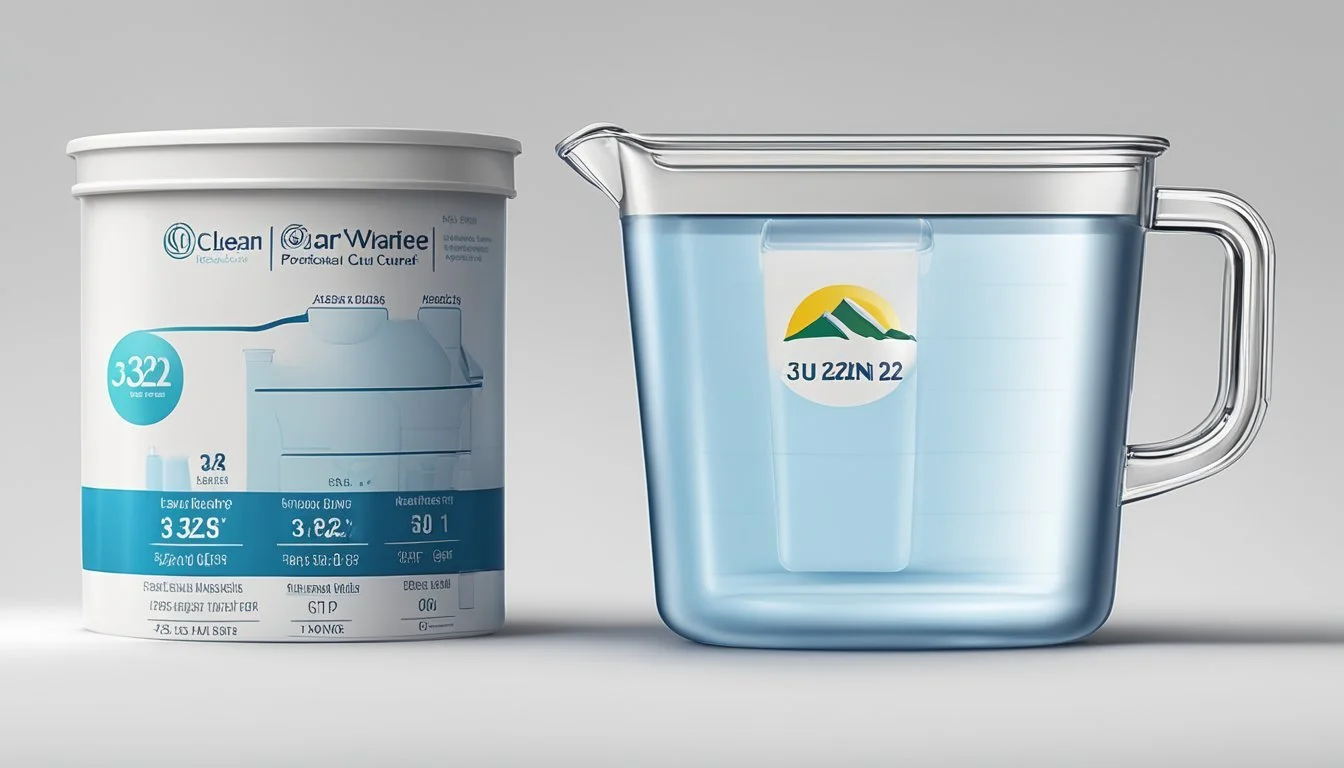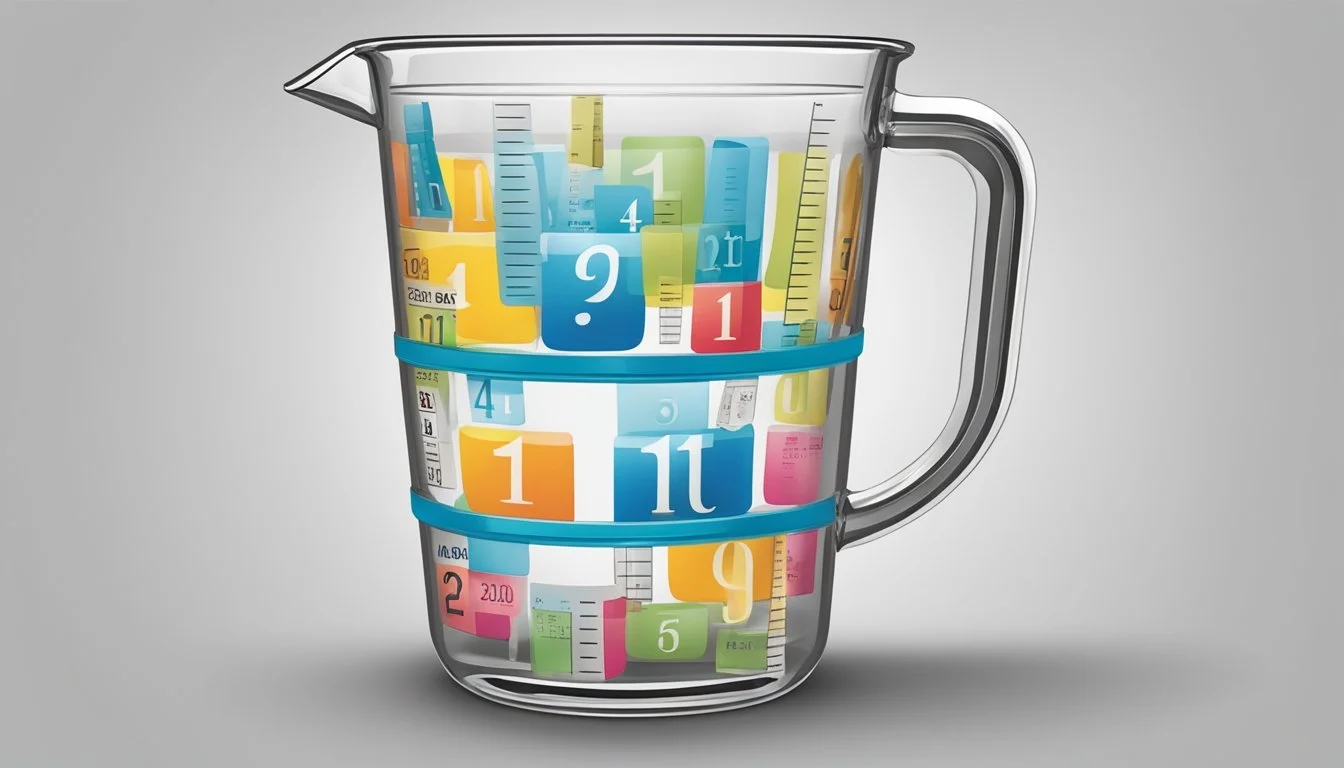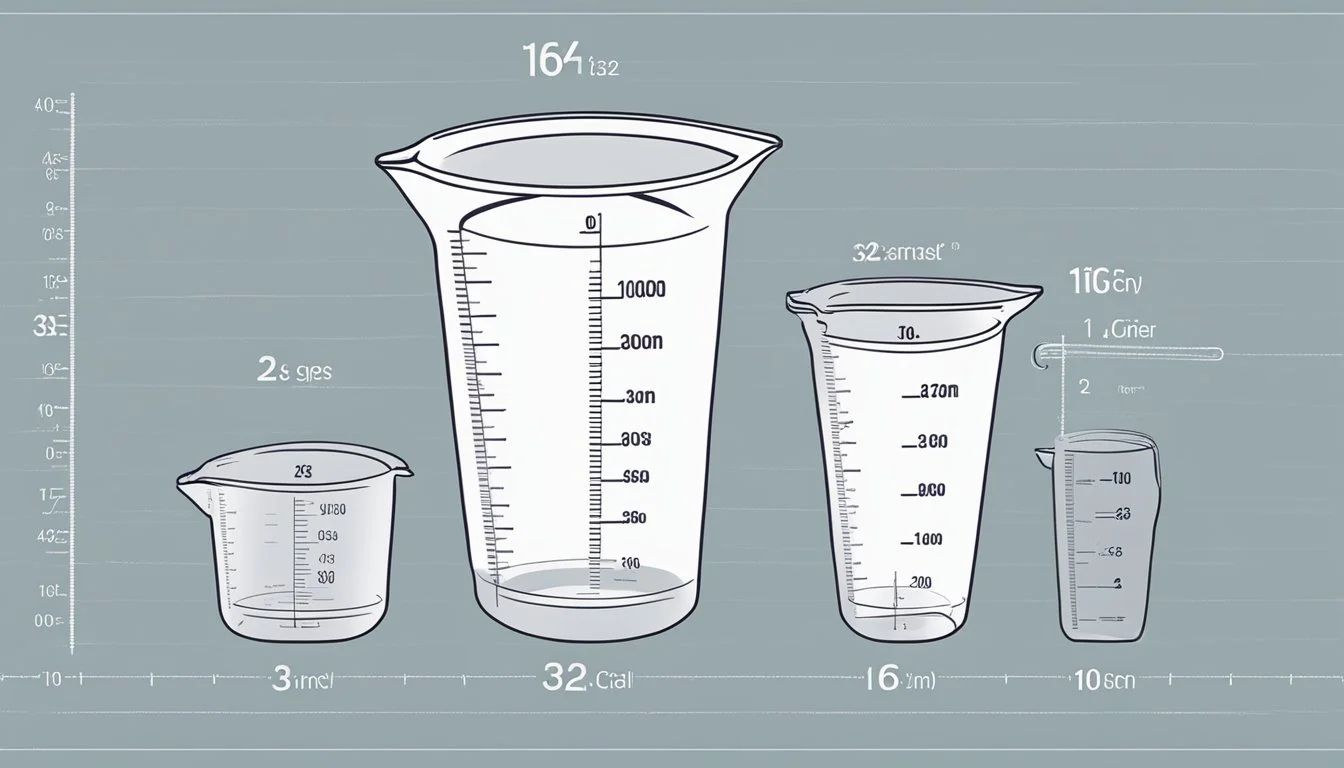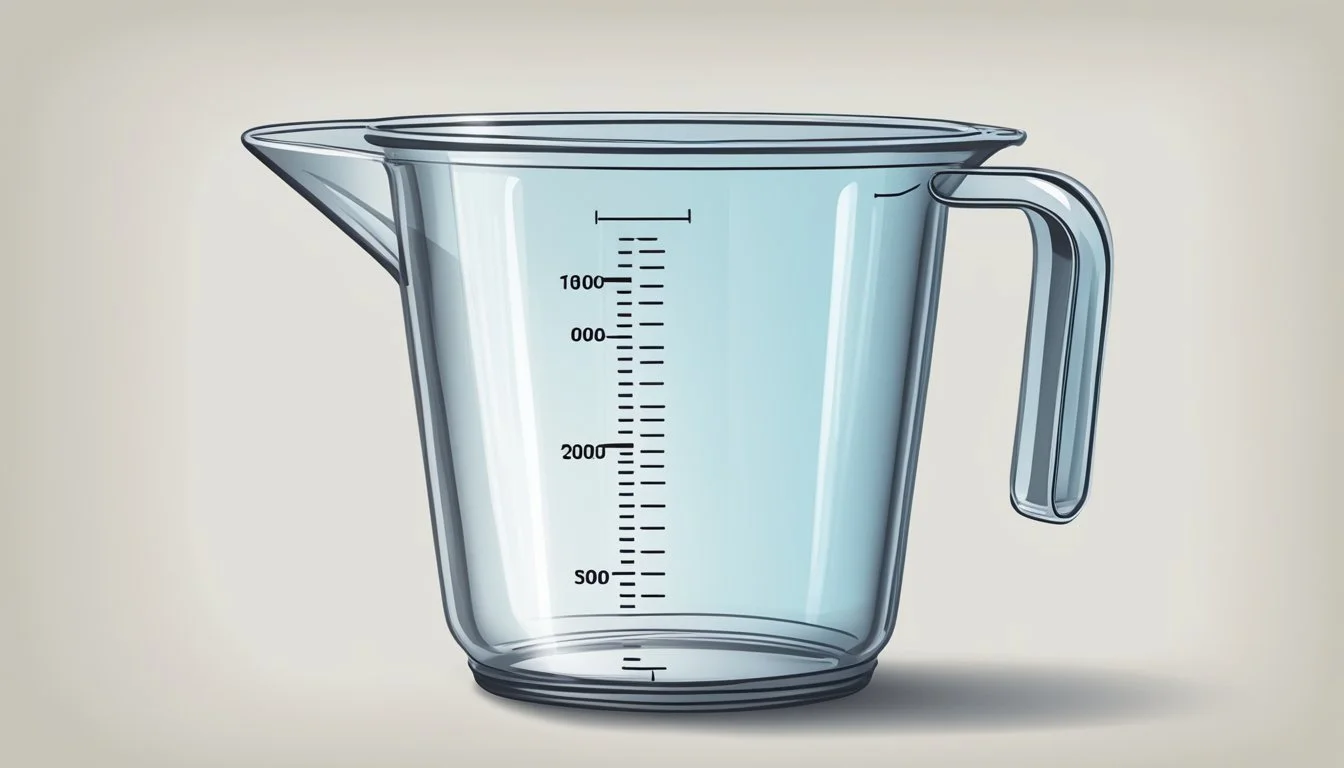How Many Ounces in a Quart?
Understanding Liquid Measurement Conversions
In measuring liquids, understanding the conversion between quarts and ounces is essential for accuracy in both cooking and scientific applications. One US quart is equivalent to 32 US fluid ounces. On the other hand, in the Imperial system, which is less commonly used today but still important historically, one quart equals 40 Imperial fluid ounces. This discrepancy arises because the US and Imperial systems have different definitions for both quarts and ounces.
Conversion between quarts and ounces is straightforward when the correct values are applied. For recipes or tasks that require precise measurements, the ability to convert these units ensures successful outcomes. When converting, it's critical to remember the system of measurement in use, as the same numerical value will represent different volumes in the US customary and Imperial systems. Therefore, always use the appropriate conversion factor: 32 for US ounces per US quart or 40 for Imperial ounces per Imperial quart.
Understanding the Basics
When working with measurements in cooking or everyday life, it's important to understand the relationship between units of volume such as quarts and fluid ounces. The quart is a unit of volume in the US customary and Imperial systems, while the fluid ounce is a smaller unit of liquid volume within these same systems.
US Customary System:
1 quart is equal to 32 US fluid ounces.
The fluid ounce here is a measure of volume used for liquids.
Imperial System:
1 imperial quart is equal to 40 imperial fluid ounces.
Though both the US and Imperial systems have quarts and fluid ounces, their actual volumes differ because of differing definitions based on the gallon.
The following is a simple conversion table for quick reference:
Quarts (US) Fluid Ounces (US) 1 quart 32 fluid ounces 1/2 quart 16 fluid ounces 1/4 quart 8 fluid ounces
For the Imperial system, one would replace the 32 fluid ounces with 40 imperial fluid ounces in the table above. It's important to note that an ounce can also refer to weight, but when discussing fluid ounces, the focus is purely on volume. Precision in these measurements is crucial for tasks like following recipes or conducting scientific experiments where accuracy matters.
Imperial vs U.S. Customary Volume Units
Quarts and fluid ounces differ between the Imperial and U.S. Customary systems. The following subsections cover the specifics of these measurements as they apply to each system.
Quarts in Different Systems
Imperial Quarts:
1 Imperial quart = 2 Imperial pints
1 Imperial quart is equal to approximately 1.13 liters or 40 Imperial fluid ounces.
U.S. Customary Quarts:
1 U.S. quart = 2 U.S. pints
1 U.S. quart is equal to approximately 0.94 liters or 32 U.S. fluid ounces.
Fluid Ounces in Different Systems
Imperial Fluid Ounces:
1 Imperial fluid ounce = 28.4130625 milliliters
160 Imperial fluid ounces make up 1 Imperial gallon.
U.S. Customary Fluid Ounces:
1 U.S. fluid ounce = 29.5735295625 milliliters
128 U.S. fluid ounces make up 1 U.S. gallon.
In terms of volume conversion, 1 Imperial fluid ounce is roughly equivalent to 0.96076034 U.S. fluid ounces. Conversely, one can approximate 1 U.S. fluid ounce as 1.041 Imperial fluid ounces.
Volume Conversion Principles
In volume conversions, understanding the relationship between units is critical. Precise conversion factors are used to switch between volume and weight or between different volume units, ensuring accuracy in recipes, scientific calculations, and everyday measurements.
Conversion Factors
Quarts to Ounces: The standard conversion factor for converting quarts to fluid ounces is 1 quart equals 32 fluid ounces. This factor applies to liquid volume conversions and is crucial for consistently translating quart measurements into ounces.
Example:
2 quarts x 32 fluid ounces/quart = 64 fluid ounces
Ounces to Quarts: Conversely, to convert fluid ounces back to quarts, one divides the number of ounces by 32.
Example:
64 fluid ounces / 32 ounces/quart = 2 quarts
Volume to Weight
Volume to weight conversions require information about the substance's density. Weight is often given in ounces, and when density is provided, it can be used alongside the volume to calculate weight. However, for these conversions to be accurate, one must convert the density into a consistent set of units that match the volume unit being used.
Conversion Process:
Multiply the density (in g/mL) by a conversion factor to match the volume unit.
Apply the resulting density to the volume to find the weight.
Volume to Volume
Volume conversions between different volume units, like quarts to pints or cups to liters, follow specific ratios called conversion factors. These factors are constants and help ensure that calculations between volume units are precise and reliable.
Key Volume Conversion Factors:
1 quart = 2 pints
1 pint = 2 cups
1 cup = 8 fluid ounces
It is essential for one to use the correct conversion factor for the specific volume units involved in their calculation to obtain an accurate result.
Volume Units in Recipes
When preparing recipes, one often needs to convert measurements between volume units. Understanding how to convert quarts to ounces, and utilizing conversion tools, is essential for accuracy in cooking and baking.
Converting Quarts to Ounces
The standard conversion for volume units in the United States is that one quart is equivalent to 32 fluid ounces. To convert quarts to ounces, one multiplies the number of quarts by 32. This is applicable for liquid ingredients, as volume measurement assumes a liquid state. Below is an ounces to quarts conversion table:
Quarts (qt) Ounces (oz) 1 32 2 64 3 96 4 128 5 160 6 192
It’s important to note that these conversions are for fluid ounces, which measure volume, not weight.
Using Conversion Tools
Various cooking tools and resources can assist with converting quarts to ounces. Those may include measuring cups with both units marked, digital conversion calculators, or apps designed for kitchen use. When utilizing these tools, it’s critical to ensure they are calibrated correctly and are set to the correct measurement standard appropriate for the recipe one is following. Recipes originating from countries utilizing the metric system may require conversion from metric units (liters and milliliters) to imperial units (quarts and ounces) or vice versa.
Practical Measurement Guides
In this section, readers will discover easy-to-use tools for accurately converting ounces to quarts. These tools are invaluable for cooking and baking, where precise measurements are crucial.
Conversion Tables for Cooking
For culinary enthusiasts looking to convert fluid ounces to quarts or vice versa, the following conversion table provides quick reference points:
Fluid Ounces (oz) Quarts (qt) Pints (pt) Cups (c) 8 0.25 0.5 1 16 0.5 1 2 32 1 2 4 64 2 4 8 96 3 6 12
It is important to note that 32 fluid ounces equal one quart. A quart is also equivalent to two pints or four cups. These measurements are part of the United States' customary system and differ from the Imperial system used elsewhere.
Slide Bar Converter
A slide bar converter is an interactive tool that allows one to adjust the slider to convert between ounces and quarts dynamically. This digital converter often includes conversions for other units such as liters, tablespoons, and teaspoons. The user can slide the bar to the desired quantity, and the corresponding volume in another measurement unit is automatically displayed, making it an efficient tool for quick conversions during cooking or baking.
Conversion Calculations
In the context of the United States' customary units, precise calculation is critical when converting between quarts and ounces. The presented formulas offer reliable methods to perform these conversions across various contexts and ingredients.
Formulas and Examples
Formulas:
For liquid volume conversion:
1 quart is equivalent to 32 fluid ounces (fl oz).
To convert quarts to fluid ounces, multiply the number of quarts by 32.
Fluid Ounces (fl oz) = Quarts (qt) × 32
For weight conversion (specific to ingredient density):
The weight in ounces is equal to the volume in quarts multiplied by the conversion factor and the ingredient's density in g/mL.
Weight in Ounces = Quarts × 33.3816 × Density (g/mL)
Examples using the formulas:
Liquid volume example: To convert 3 quarts to fluid ounces, one would calculate
3 qt × 32 = 96 fl oz.Weight example (for a substance with a density of 0.9 g/mL): To convert 2 quarts to ounces, the calculation would be
2 qt × 33.3816 × 0.9 g/mL = 59.88688 oz.
Table for Liquid Volume Conversion:
Quarts (qt) Fluid Ounces (fl oz) 1 32 2 64 3 96
Accuracy Tips
For accurate conversion results, it is crucial to:
Ensure that the level of accuracy required is considered; if necessary, utilize more precise conversion factors.
Double-check measurements to confirm they are in the correct units (fluid ounces for volume and ounces for weight).
Use a calculator for the multiplication or division for more complex conversions involving density to minimize human error.
Recognize the type of quart being used, as a dry quart is different from a liquid quart in volume; the formulas provided are for liquid quarts.
Common Volume Conversions
When it comes to volume conversions in the kitchen, understanding how common units such as quarts, cups, and ounces translate into one another is essential for accurate measurements.
From Quarts to Cups
A quart (qt) in the United States is equivalent to 4 cups. This means for every 1 quart, a person has:
1 quart (US fluid quart) = 4 cups (US)
Whether they're measuring milk or stock, cooks can rely on this conversion for volumetric accuracy.
From Ounces to Liters
When converting from fluid ounces (fl oz) to liters (L), they have to keep in mind that 1 fluid ounce equates to approximately 0.0295735 liters. Here's a straightforward conversion:
1 ounce (US fluid ounce) = 0.0295735 liters
This conversion is popular when a recipe requires a person to translate fluid ounces to liters, which is frequent in recipes documenting international cuisine.
Additional Tools for Measurement
When converting ounces to quarts or vice versa, some additional tools can ensure accuracy and ease the process. These instruments cater to different user preferences and can vary from digital platforms to tangible guides.
Online Conversion Calculators
Online conversion calculators are digital tools that instantly convert a starting value of ounces to quarts or quarts to ounces. Users simply need to enter the quantity they wish to convert and select the appropriate unit — in this case, US fluid ounces or quarts. The converter then processes the input and provides the converted value in real-time. These calculators are useful for their precision and convenience.
Example: To convert 32 ounces to quarts, one enters '32' in the ounces field and the calculator will display '1 quart' as the result.
Quick Reference Guides
For those who prefer a physical tool, quick reference guides can be invaluable. These typically come in the form of charts or tables and list various increments of measurements alongside their corresponding converted values. Quick reference guides often provide abbreviations and symbols for units of measurement, such as 'oz' for ounce or 'qt' for quart, making it easier to understand and use.
Example: A quick reference guide may show:
Fluid Ounces (oz) Quarts (qt) 8 0.25 16 0.5 32 1
Appendix: Measurement Standards
When discussing measurements such as ounces and quarts, it's essential to differentiate between the systems used in the United States and the United Kingdom, as they are not identical.
United States Customary System
In the United States Customary System, the unit of volume is measured in U.S. fluid ounces. One quart in this system is equal to 32 U.S. fluid ounces. This system is widely used in the United States for cooking, labeling of beverages, and many other applications. The following table outlines the conversion between ounces and quarts in the United States Customary System:
Volume in Quarts (qt) Volume in U.S. Fluid Ounces (fl oz) 1 qt 32 fl oz 2 qt 64 fl oz 3 qt 96 fl oz 4 qt 128 fl oz
It is crucial to note that the ounces referred to here are fluid ounces, which are a measure of volume, not weight.
UK Imperial Measures
Conversely, the UK Imperial Measures utilize the imperial fluid ounces. The UK system defines one quart as equivalent to 40 imperial fluid ounces. This system was standardized in the United Kingdom and is still used in some Commonwealth countries. The conversion of fluid ounces to quarts in the imperial system is also straightforward:
Volume in Quarts (qt) Volume in Imperial Fluid Ounces (fl oz) 1 qt 40 fl oz 2 qt 80 fl oz 3 qt 120 fl oz 4 qt 160 fl oz
The values in the table are rounded to the nearest whole number for simplicity. It is essential to use the correct measurement standard when converting to avoid inaccuracies, especially in tasks that require precision such as cooking or scientific calculations.
Conclusion
In measuring liquids, one quart is equivalent to 32 fluid ounces. This conversion is straightforward and consistent across all forms of liquid measurement, whether it involves water, milk, or other fluids.
For dry ingredients, the conversion varies slightly due to the difference in measuring volume and weight. Typically, a dry quart constitutes approximately 37.23 ounces. However, this can fluctuate based on the ingredient's density and compaction.
The following table summarizes the conversion:
Measurement Fluid Ounces (oz) Dry Ounces (oz) 1 Quart 32 ~37.23 2 Quarts 64 Varies 3.5 Quarts 112 Varies
It's important to use the correct quart measurement corresponding to the ingredient's nature—liquid or dry. Precision in these conversions ensures accuracy in recipes and various applications that require measuring volume or weight.






